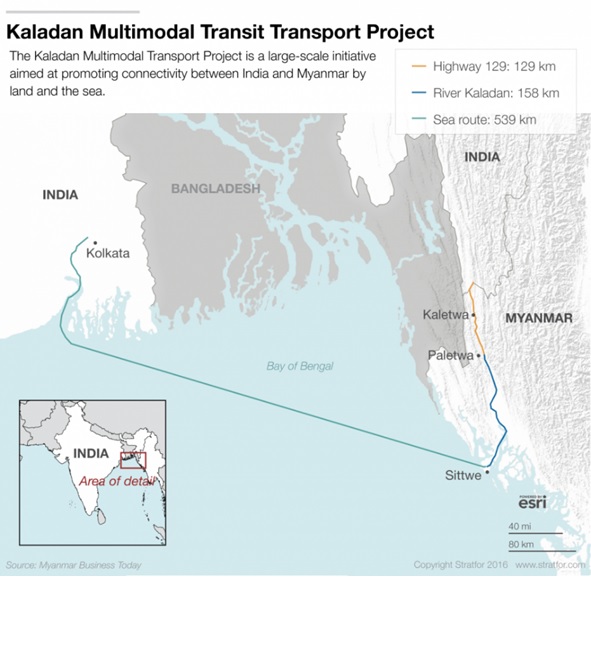
India's partnership with Southeast Asia
In just one week in early September, Prime Minister Narendra Modi hosted the President of Myanmar, made his first trip to Vietnam and attended the 14th annual India-ASEAN Summit in Laos. And signed a slew of agreements – all a demonstration of Modi’s intention to deepen India’s presence in Southeast Asia.
India’s influence remains visible throughout South-east Asia, from the Indian diaspora communities in Kuala Lumpur to the ancient Hindu temples in Jakarta. Some Southeast Asian nations owe their very names to India; Indonesia, for instance, means “Indian islands.” Now, it seems that India hopes to renew its sway in the region.
Prime Minister Modi first revealed his plan to enhance India’s ties to Southeast Asia in 2014, when he recast India’s long-standing “Look East” policy as “Act East.” Increased cooperation with Southeast Asia could help Delhi achieve a variety of goals.
India, for instance, wants to counter China’s influence in the region and affirm its status as a rising global power. To that end — and to enhance security in the Malacca Strait, an important conduit for Indian trade — the country is working to strengthen its ties with Vietnam.
En route to the G-20 summit in China, Modi stopped in Vietnam, marking the first visit to the country by an Indian prime minister in 15 years. He offered Hanoi a $500 million line of credit for defense purchases, and discussed bolstering India’s naval presence in the region with his Vietnamese counterpart, Nguyen Xuan Phuc. Vietnam, in turn, upgraded its relationship with New Delhi to a “comprehensive strategic partnership,” the same status that China and Russia share.
Of all the factors driving India’s Act East strategy, trade is the chief motivator. Since India and ASEAN finalized their trade agreement in 2009, their bilateral trade has grown markedly, reaching $76 billion in 2015 — $6 billion higher than the initial goal. ASEAN, furthermore, is India’s fourth-largest trade partner, accounting for 10 percent of the country’s overall bilateral trade.
There are inherent limits to expansion of India-ASEAN trade ties. India’s main exports to Vietnam, for example, are meat, fish and cotton. Electronic goods, mineral fuels and machinery, meanwhile, constitute half of ASEAN’s imports. On the other hand, though India has a strong services sector, ASEAN’s protectionist policies make it difficult to export them to countries in the union. This partly explains why China’s trade with ASEAN continues to dwarf India’s and why India’s exports to the bloc have not budged from $25 billion in 2010, even as overall trade between the two has grown. The trade imbalance frustrates New Delhi, but until the Indian government enacts the reforms to its land and labor laws necessary to encourage manufacturing, its exports to Southeast Asia will grow slowly, if at all.
Because India relies on the Strait of Malacca for more than half of its international trade, New Delhi wants to diversify its trade routes and build alternate land and water-based routes. Here, too, India’s efforts have fallen short.
Insufficient Links
Any alternative trade route linking India to Southeast Asia will necessarily pass through Myanmar, with which India shares a 1,600-kilometer border. In 2005, India undertook a $140 million project to build a highway from Mizoram state to Thailand by way of Myanmar. But poor inter-governmental cooperation and planning have stalled the project. Although India’s Border Roads Organization upgraded the 132-kilometer stretch of road from Moreh (Manipur, India) to Tamu (Myanmar), New Delhi did not instruct it to upgrade the nearly 70 bridges along the road, rendering it unusable. During their recent meeting, Modi and Myanmar’s president signed a memorandum of understanding to build the bridges. Now, the expected completion date for the highway has been pushed back from 2016 to 2019.
Another infrastructure endeavour has been similarly unsuccessful. Begun in 2008, the Kaladan project, which proposes to connect the Indian state of Mizoram with Myanmar’s Port of Sittwe by road and waterway, has already exceeded its budget by $24 million. Once complete, the route will require goods to be transferred from boats to trucks at an impassable point in the Kaladan River, slowing down transit time.
Put simply, there is a long way to go for India to realise its trade potential and targets with ASEAN countries.
— STRATFOR
https://www.stratfor.com/analysis/indias-partnership-southeast-asia-nears-its-limits
-
CHINA DIGEST
-
 ChinaChina Digest
China’s PMI falls for 3rd month highlighting challenges world’s second biggest economy faces
ChinaChina Digest
China’s PMI falls for 3rd month highlighting challenges world’s second biggest economy faces
-
 ChinaChina Digest
Xi urges Chinese envoys to create ‘diplomatic iron army’
ChinaChina Digest
Xi urges Chinese envoys to create ‘diplomatic iron army’
-
 ChinaChina Digest
What China’s new defense minister tells us about Xi’s military purge
ChinaChina Digest
What China’s new defense minister tells us about Xi’s military purge
-
 ChinaChina Digest
China removes nine PLA generals from top legislature in sign of wider purge
ChinaChina Digest
China removes nine PLA generals from top legislature in sign of wider purge
-
-
SOUTH ASIAN DIGEST
-
 South Asian Digest
Kataragama Kapuwa’s arrest sparks debate of divine offerings in Sri Lanka
South Asian Digest
Kataragama Kapuwa’s arrest sparks debate of divine offerings in Sri Lanka
-
 South Asian Digest
Nepal: Prime Minister Dahal reassures chief ministers on police adjustment, civil service law
South Asian Digest
Nepal: Prime Minister Dahal reassures chief ministers on police adjustment, civil service law
-
 South Asian Digest
Akhund’s visit to Islamabad may ease tensions on TTP issue
South Asian Digest
Akhund’s visit to Islamabad may ease tensions on TTP issue
-
 South Asian Digest
Pakistan: PTI top tier jolted by rejections ahead of polls
South Asian Digest
Pakistan: PTI top tier jolted by rejections ahead of polls
-






Comments